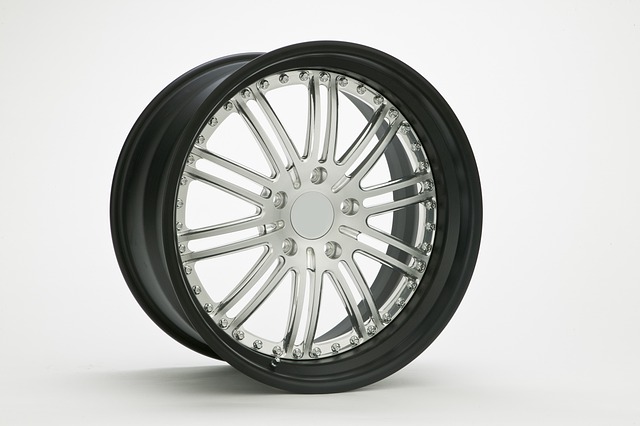Looking to register your car in California? This comprehensive guide breaks down the process step-by-step. From understanding the registration requirements to gathering essential documents, verifying the Vehicle Identification Number (VIN) using a reliable VIN verifier, and completing the application – we’ve got you covered. Learn how to pay the necessary fees and submit everything successfully, ensuring your vehicle is legally registered in the Golden State.
- Understanding the Registration Process
- Gather Necessary Documents
- Verify the Vehicle's Identification Number (VIN)
- Complete the Registration Application
- Pay the Required Fees and Submit
Understanding the Registration Process

Understanding the Registration Process in California
Registering a car in California involves several key steps that ensure your vehicle meets all state and federal safety standards. It begins with gathering essential documents, including your vehicle’s registration from the previous state of residence, a valid driver’s license, proof of insurance, and identification verifying your residency in California. Additionally, you’ll need to pass a vehicle inspection, which can be facilitated by a mobile VIN verifier or a traditional inspection station. This process verifies that your car meets emissions and safety regulations.
Once the inspection is complete and all documents are in order, you can visit a California Department of Motor Vehicles (DMV) office to initiate the registration. Here, you’ll provide proof of identification, insurance, and ownership, as well as pay the requisite fees. The DMV will then issue your vehicle’s registration, which includes a unique Vehicle Identification Number (VIN) that serves as a permanent identifier for your car within the state’s database. This seamless process ensures that both you and your vehicle comply with California’s stringent regulations, facilitating safe and legal operation on state roads.
Gather Necessary Documents

Before registering your car in California, you’ll need to gather several important documents. The first step is to obtain a Vehicle Identification Number (VIN) verification report. This can be done through a mobile vin inspection or by visiting a local DMV office for a traditional vin inspection. The VIN is a unique 17-character code that identifies your vehicle, and it’s crucial for the registration process.
Along with the VIN verification, you’ll need to provide proof of ownership, typically in the form of a title or bill of sale, along with any applicable sales tax or fees. Don’t forget to bring valid identification, such as a driver’s license or state-issued ID card. Having these documents ready ensures a smoother registration process at the California DMV.
Verify the Vehicle's Identification Number (VIN)

Before you begin the registration process, it’s crucial to verify your vehicle’s Identification Number (VIN). This unique 17-character code is a critical piece of information that links directly to your car’s history and specifications. A proper VIN inspection ensures accuracy throughout the registration procedure and can help avoid potential issues later on.
Using a reliable mobile vin verifier or undergoing a mobile vin verification process makes this task straightforward. Simply enter your VIN into an approved app or service, which will then cross-reference it against vast databases to deliver detailed insights about the vehicle’s past, including ownership history, accident reports, and outstanding recalls. This vital step is often overlooked but plays a significant role in ensuring a smooth car registration experience in California.
Complete the Registration Application

To start the registration process, you’ll need to complete the Registration Application, which is typically done at a California Department of Motor Vehicles (DMV) office or online through the DMV’s website. Before submitting your application, ensure all information is accurate and up-to-date. This includes the vehicle’s make, model, year, and its unique identifier: the Vehicle Identification Number (VIN). A reliable method to verify the VIN is by using a mobile vin inspection or mobile vin verifier service, which can quickly cross-reference your VIN with official databases.
By utilizing these services, you benefit from the convenience of a mobile vin verification process, allowing for faster and more efficient registration. This step is crucial as an accurate VIN ensures your vehicle’s information aligns with the DMV records, streamlining the registration and potentially saving time on potential future issues or discrepancies.
Pay the Required Fees and Submit

After gathering all necessary documents, it’s time to pay the required fees and submit your application. The California Department of Motor Vehicles (DMV) charges a fee for vehicle registration, which varies based on the type of vehicle. Make sure you have a valid VIN verifier or use a mobile vin inspection service to ensure your vehicle’s identification number (VIN) is accurate and reported correctly. This step is crucial as it verifies your car’s history and ensures compliance with state regulations.
Submit your completed application, along with the necessary documents and fees, at any DMV field office or through their online portal. If you opt for a mobile vin verification service, they will typically handle the paperwork and submission process on your behalf, making it an efficient and convenient alternative to traditional methods. Once your application is approved, you’ll receive your vehicle’s registration certificate, which grants your car official status in California.
Registering a car in California involves several straightforward steps, from gathering essential documents to completing an application and paying fees. Using a reliable VIN verifier ensures accurate identification of your vehicle throughout the process. By adhering to these guidelines, you can efficiently navigate the registration process and hit the roads legally and confidently.
